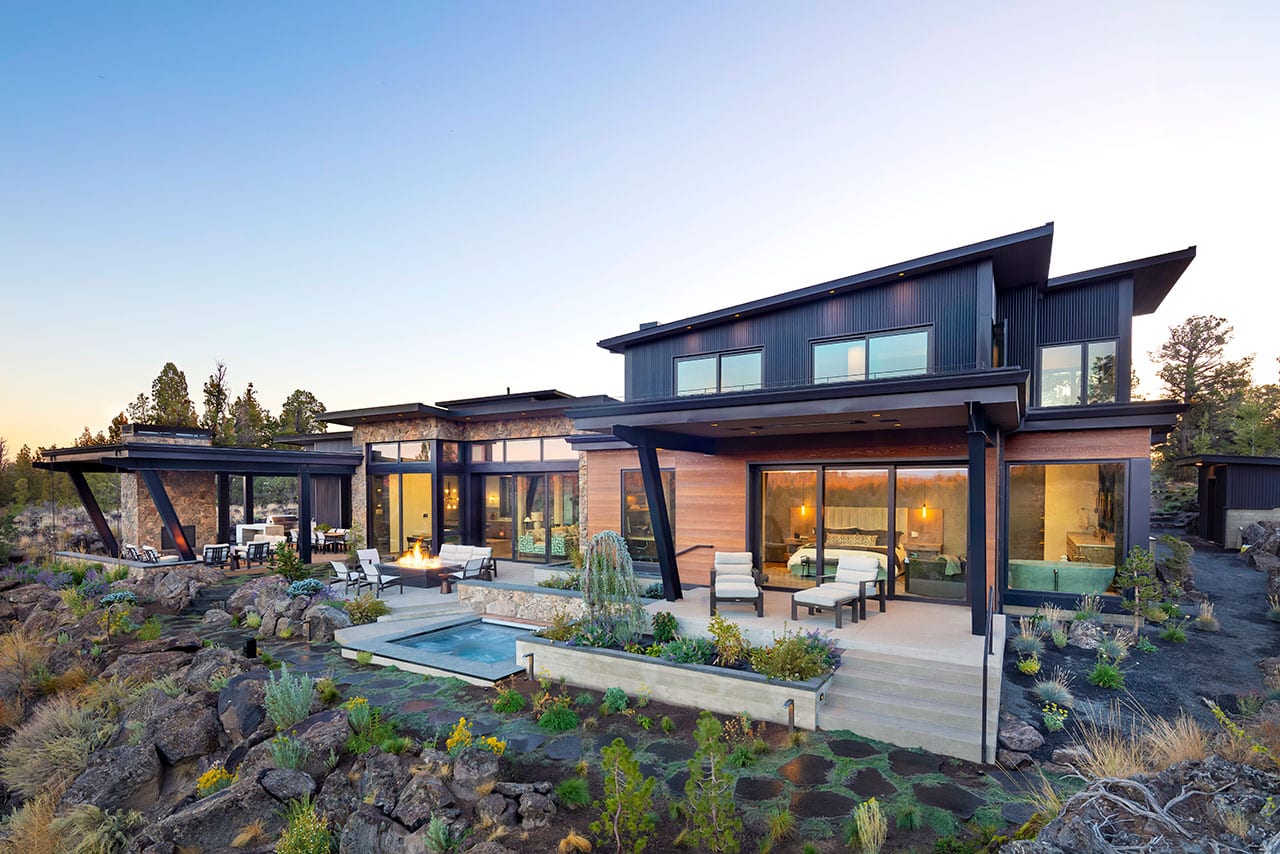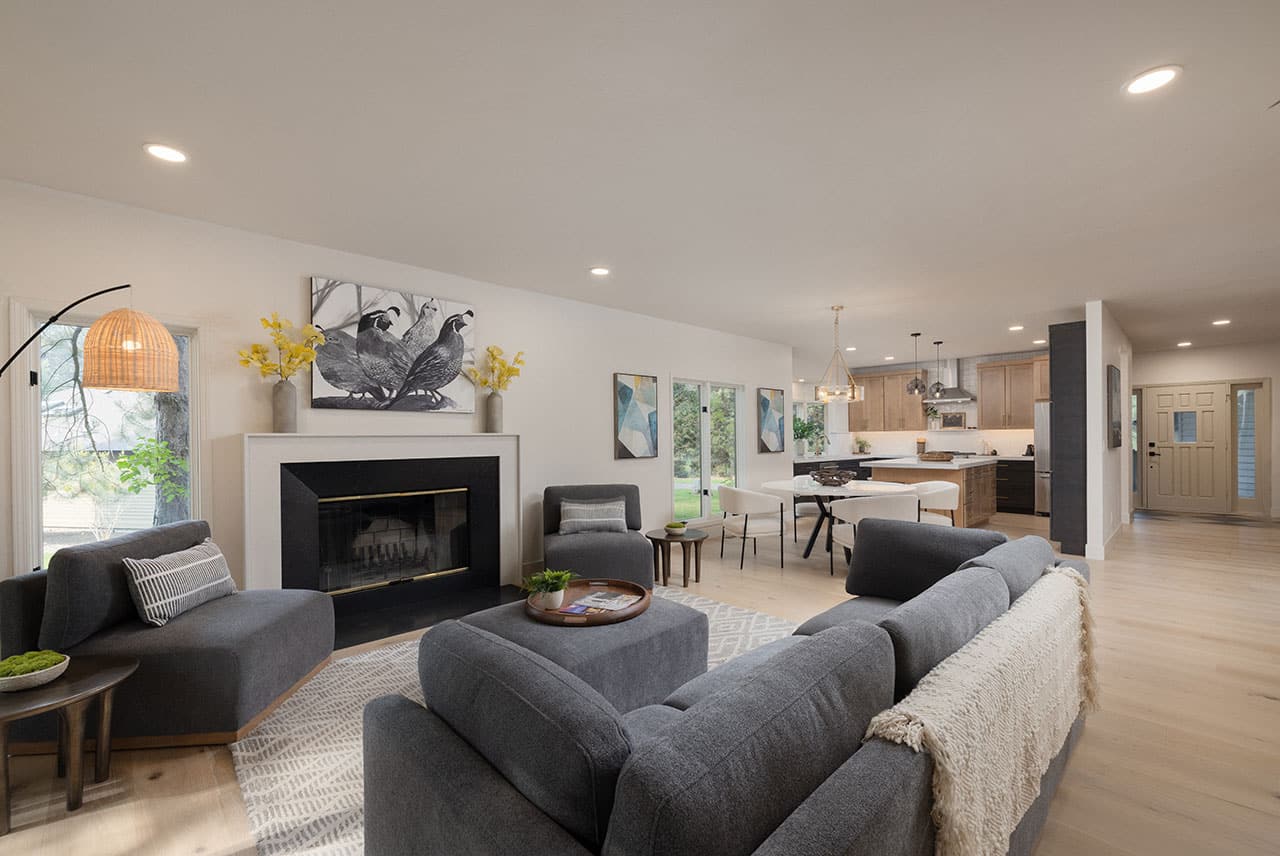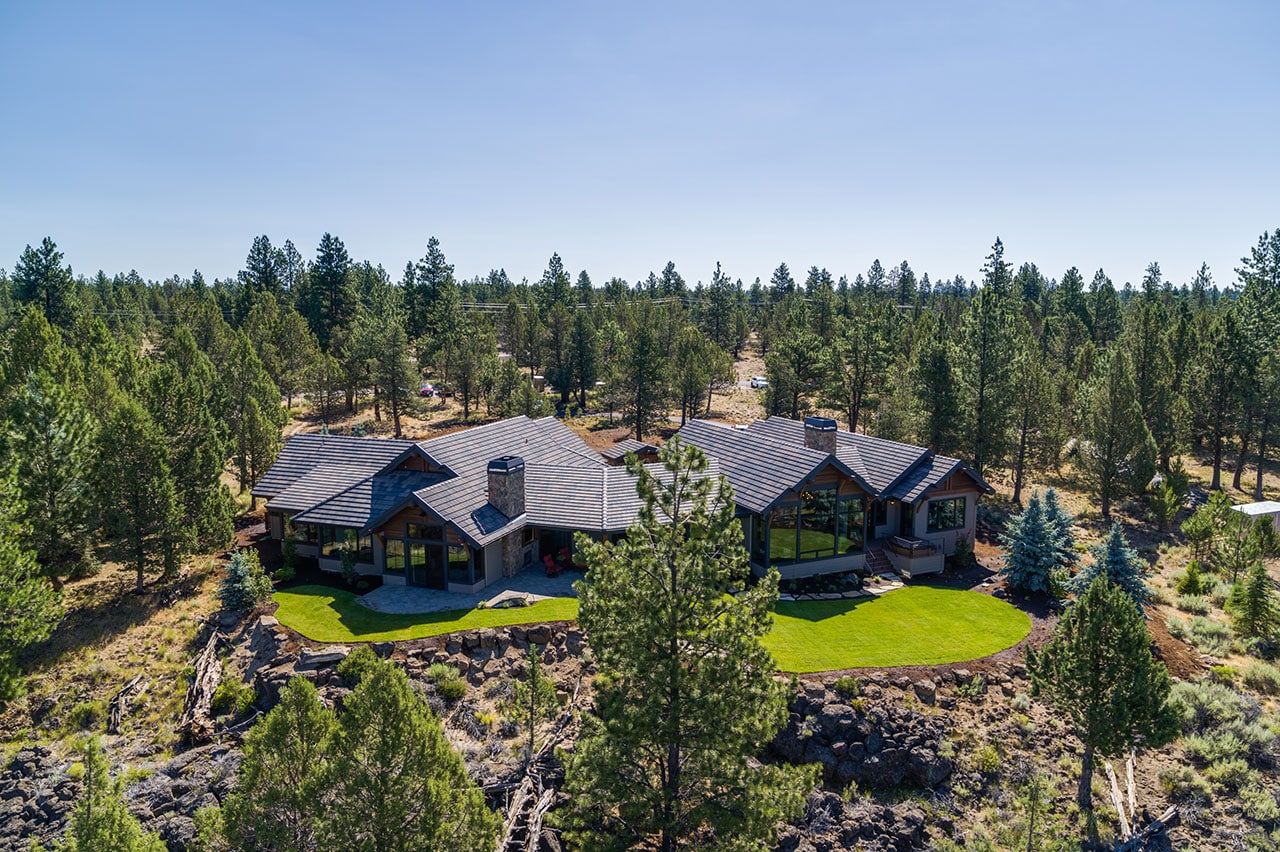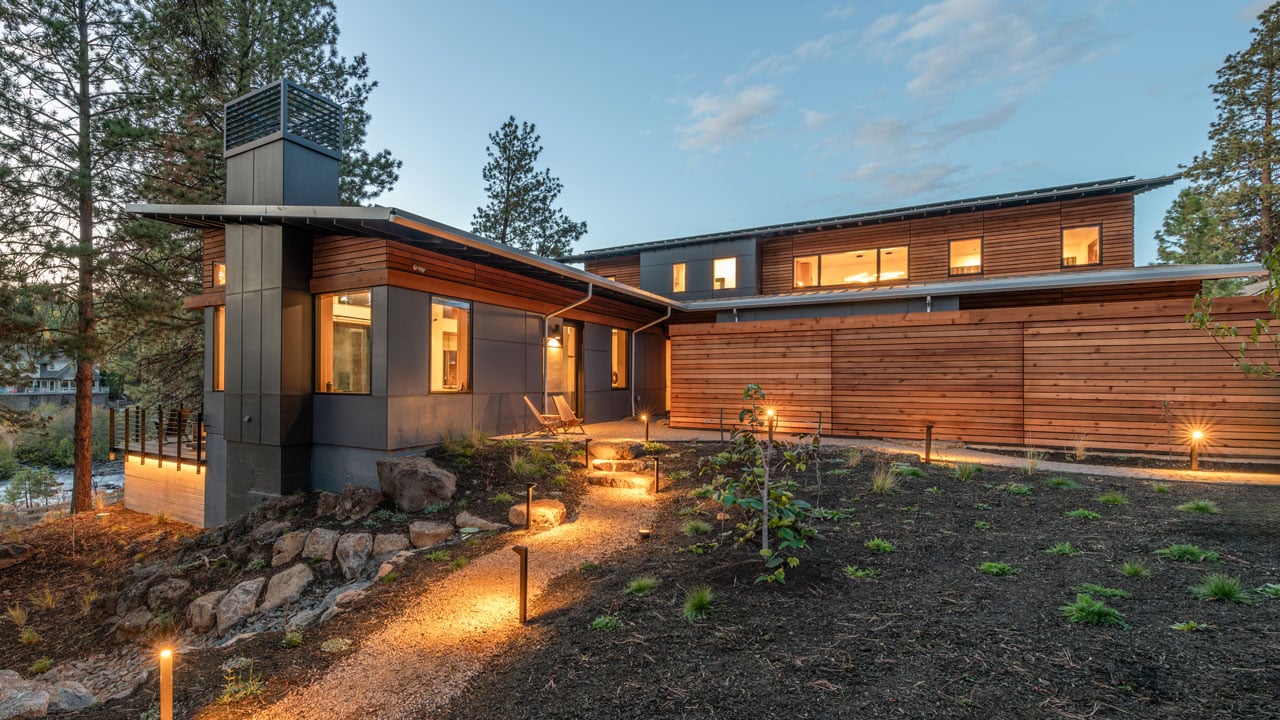A tour of Mike and Cindi O’Neil’s home offers treats for the eyes—mountain and desert landscapes—and for the body—warmth, comfort, bountiful natural light and rooms that flow easily from one to the next. But hidden within the walls, windows, roof and floors are planet-saving features.
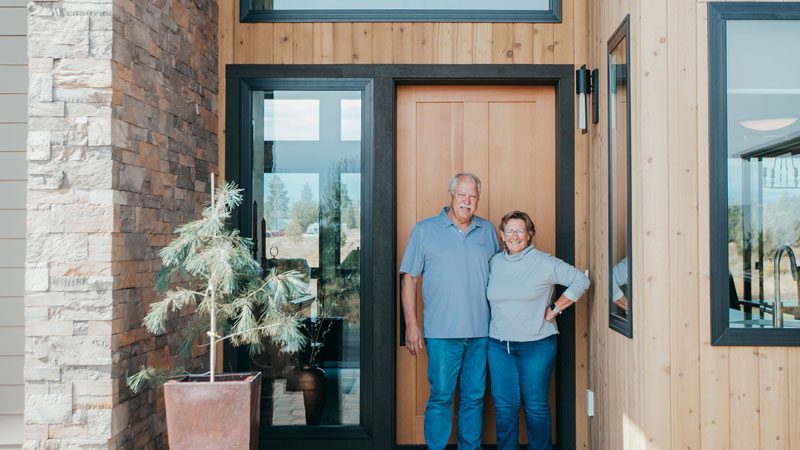
This award-winning contemporary house is green—meaning that it’s packed with energy efficiencies from LED lighting to a ductless mini-split heating system and solar panels. These and other features add up to a net-zero home that produces as much energy as it consumes over the course of a year.
As owners of SolAire Homebuilders, the O’Neils have helped nearly 400 clients create high-efficiency, healthy custom homes since 1995. “Our clients enjoy homes that are more energy efficient than their neighbors’ homes,” Cindi said.
When it was time to build their own “forever home,” as Cindi puts it, they hired Bend architect Neal Huston to design a house in the countryside near Sisters. The site had few trees, allowing for unimpeded views of Broken Top and the Three Sisters and endless blue skies.
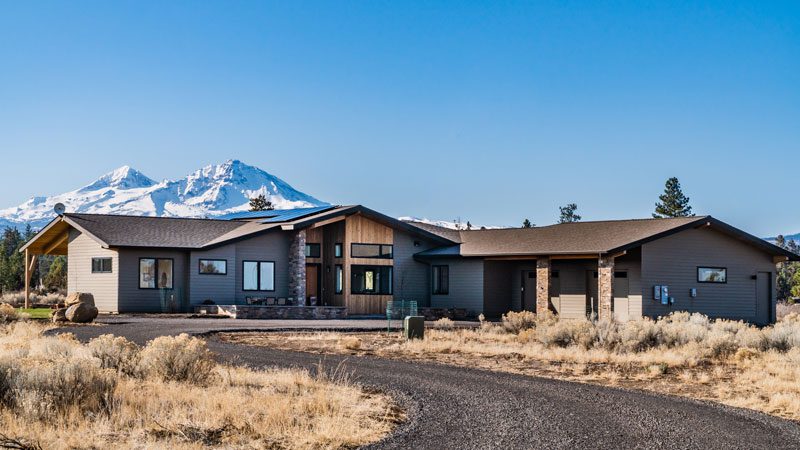
The 2,800-square-foot home has vaulted ceilings over the living room, dining room and kitchen, four bedrooms (two are used as offices) and two baths on a single level with ADA universal design features. They also have two outdoor living areas which together offer a grill, sitting alcove, a mobile firepit and a chiminea.
The O’Neils drew on their backgrounds to ensure that the home’s energy needs would be sustainable over the years, relying heavily on Central Oregon’s sunny climate. Mike now has 45 years in construction, and Cindi’s work as an ecologist strongly influenced her desire to build their business and residence around green practices.
Completed in 2020, the home was on the Central Oregon Builders Association Tour of Homes in 2021. An Earth-Advantage Platinum certified home, it won the Green Building Award in the $500,000 to $999,000 category. It also won the Best Kitchen and Best Value Awards in the $975,100 to $1 million category.
Airtight living
Central Oregon’s famed year-round sunlight can be tricky to manage. Taking advantage of a southwest orientation, the
O’Neil home recruits passive sunlight through expansive, high-efficiency windows on the view side.
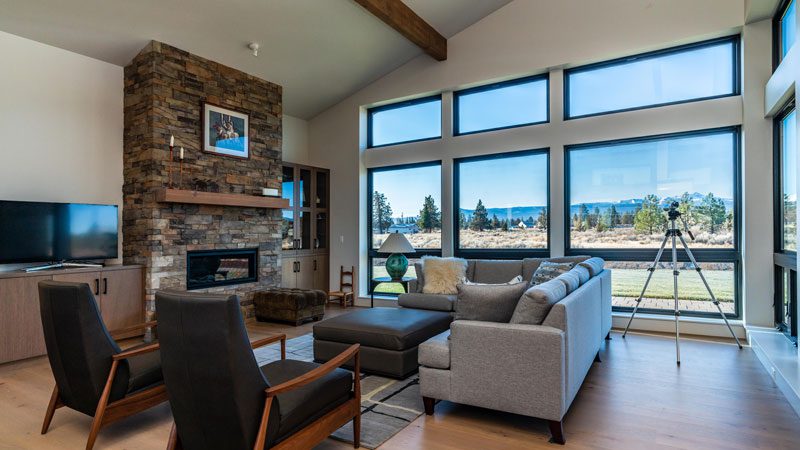
But as longtime residents of the high desert know, the sun can also be punishing on a home. To mitigate sun exposure, the couple extended the eaves for shade and installed exterior solar shades that block 95 percent of heat from crossing into the building. In wintertime, the shades remain up to harness the sun’s abundant warmth.
The couple also created a nearly airtight dwelling by paying special attention to walls, doors, attics and ceilings where typical homes leak heat and air. The exterior walls are 10-inches thick and filled with blown-in fiberglass. Rafters and ceilings are super-insulated with foam and loose fill fiberglass.
To eliminate major heat loss through ducting in forced-air heating systems, they installed a whisper-quiet heat pump outside and wall cassettes, or “mini-splits,” inside. Whereas forced-air systems consume a lot of electricity to heat or cool outside air, heat pumps reduce electrical needs with technology that requires only heating or cooling air from the inside. “It’s a cool technology,” Cindi said. “The efficiency of a heat pump is astounding, and you don’t have to bring in outside air to get the comfort level down to a set temperature.”

Airtight homes also require that stale air be ventilated out. Two devices, an energy recovery ventilator, or ERV, and a HEPA filter help maintain indoor air quality. These companion pieces draw fresh air into the HEPA filter, which removes dust, pollen, pollutants and wildfire smoke, and then expel stale or smoky air to the outside.
Most of the electrical needs for the O’Neil home are handled within the system. The roof-top solar array provides power during the day, but in the morning before the sun rises, and in the evening as it sets, a Tesla Powerwall kicks in as a backup. When the Tesla runs out, the home pulls from the local power grid, Central Electric Cooperative. Winter grid usage is offset by excess electricity generated from solar panels in summer, which goes back into the grid. Hence, the net zero designation. Net zero also shields homeowners from inflation because whatever they buy on the grid is reimbursed by their contributions to the grid.
Aesthetics balanced with efficiencies
Inhabitants of energy efficient homes must balance their aesthetic desires with health-minded compromises. For example, carpet is a no-go in most green dwellings because it produces VOCs (volatile organic compounds) and collects dirt that sullies the air. The O’Neils chose engineered white oak flooring and porcelain tiles for most of the home but couldn’t resist adding a bit of carpet in their closets. And because bare feet love a warm floor, the couple installed radiant heat in the bathrooms.
The gourmet kitchen combines energy efficiencies with modern design, featuring a large quartz-topped island with bar stools. “We’re often in the kitchen together,” Cindi said. “We call Mike the sous chef. At SolAire, he’s the builder. At home, the kitchen is my territory, and I get to be the boss there,” she said and laughed.
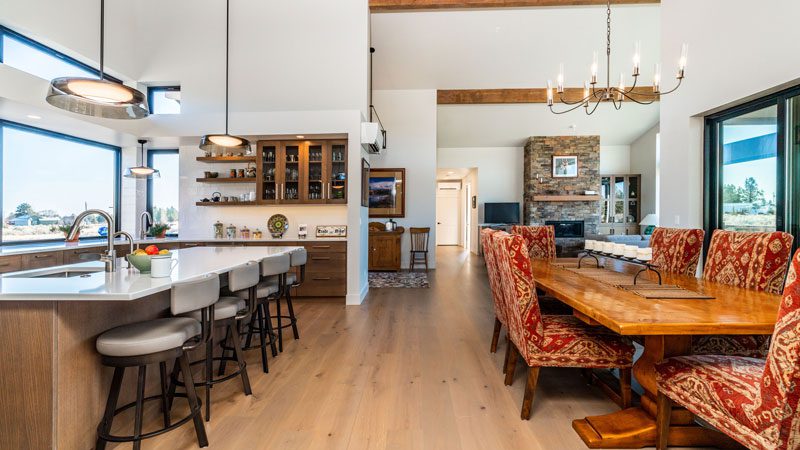
Cabinets are white oak and don’t off-gas VOCs. The kitchen faucets as well as bathroom shower heads are Waterwise to conserve water. Appliances are high end, Energy-Star rated, and a walk-in pantry is large enough to stock a couple of weeks’ worth of groceries—a handy feature when living in the country.
“It’s a joy to live in. It feels sometimes like I don’t need to go outside because of the way Neal Huston designed the views,” Cindi said.
The couple is committed to intentional and thoughtful design to create high-efficiency, healthy homes. “The built environment consumes 25 percent of the nation’s energy,” Cindi said. “Why don’t we reduce the dependence on carbon? Every home has a roof to support solar panels. Every builder has a choice on whether they super-insulate and build a home to reduce energy demand going into the future.”
“We’re concerned about the world and what we’re leaving our grandchildren,” Mike added. “Building sustainable homes that last 200 years will improve the environment for future generations.”

